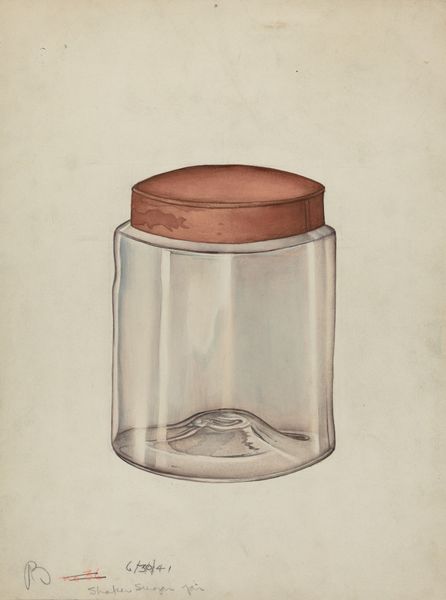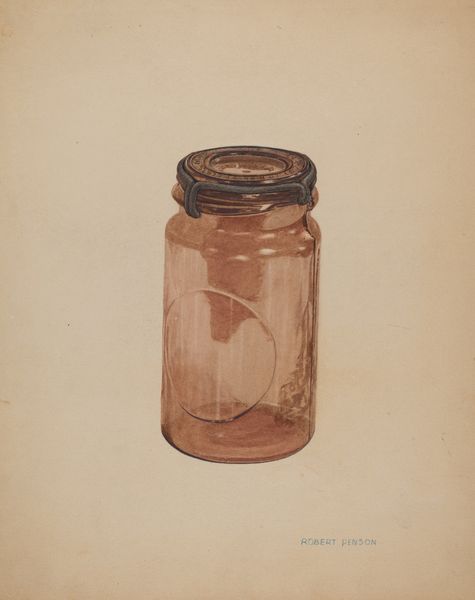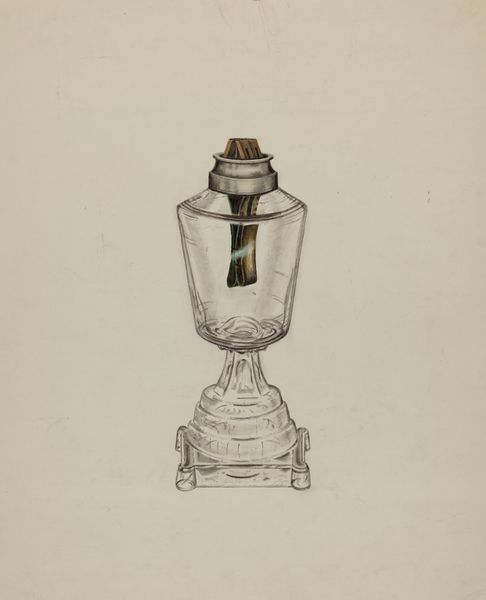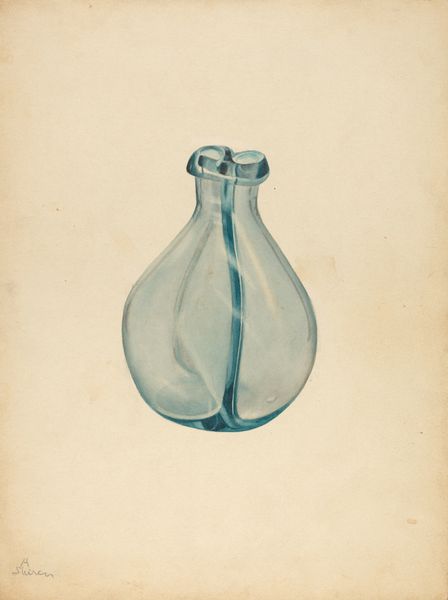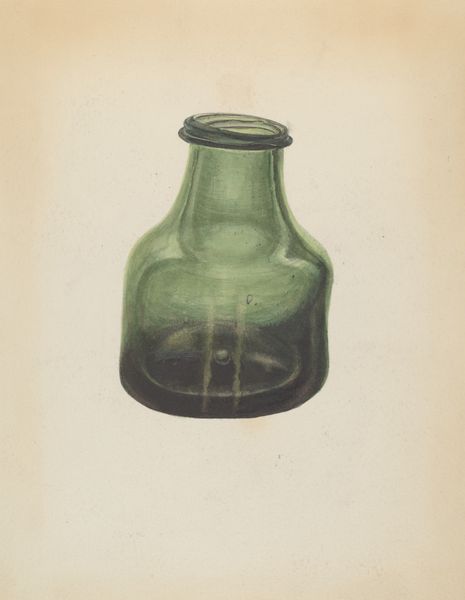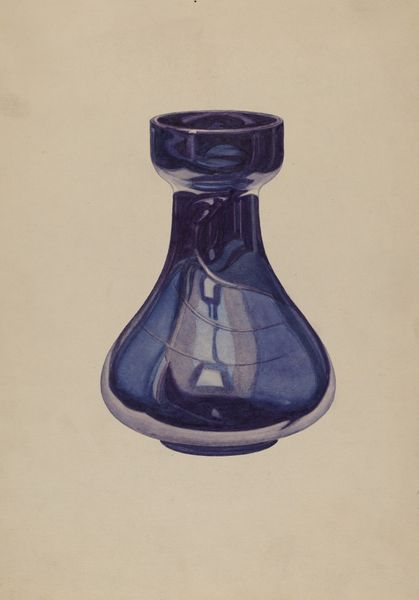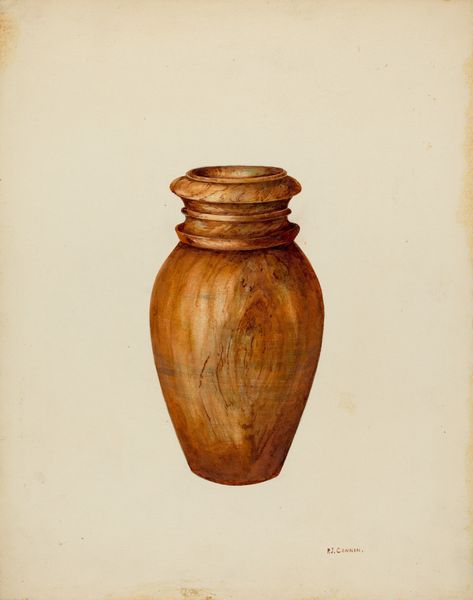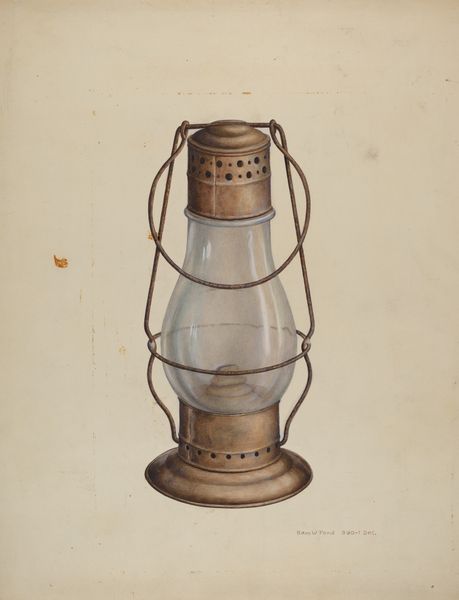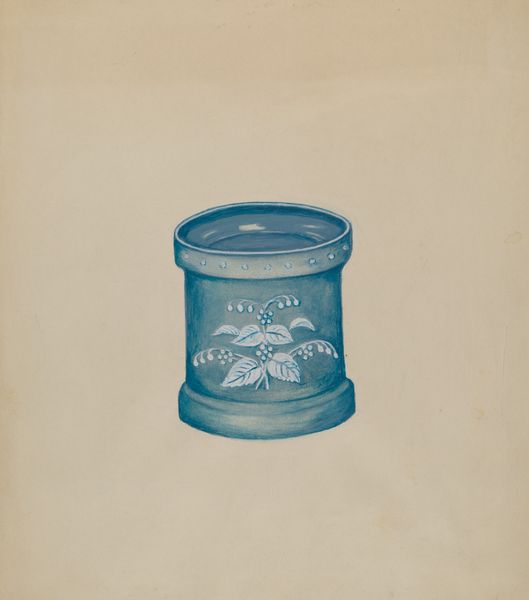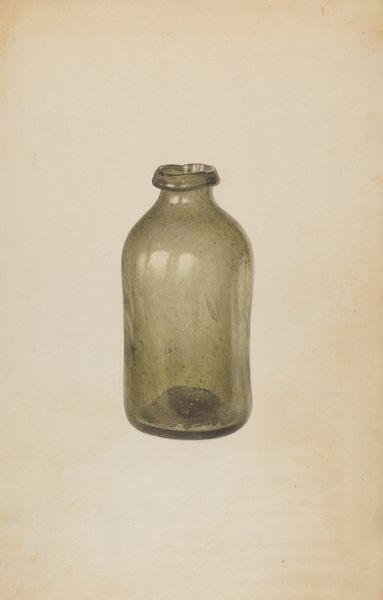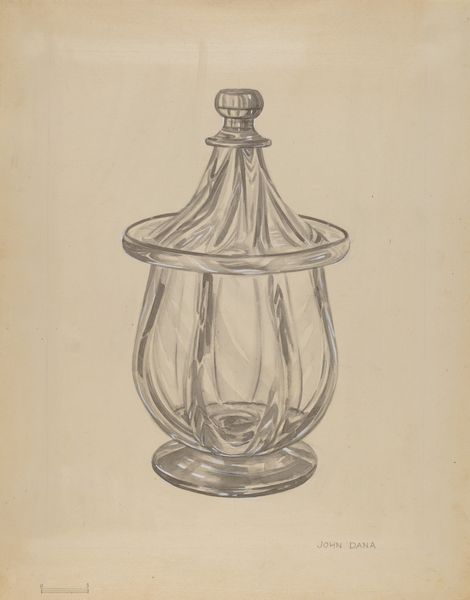
drawing, painting, watercolor
#
drawing
#
painting
#
watercolor
#
watercolor
#
realism
Dimensions: overall: 25.7 x 18.7 cm (10 1/8 x 7 3/8 in.)
Copyright: National Gallery of Art: CC0 1.0
Curator: This is Charles Goodwin’s “Shaker Sugar Jar,” painted in 1941 using watercolor. It’s an unassuming image at first glance. Editor: Yet there’s a stillness, a certain austerity that captivates. The light plays subtly on the glass, hinting at its contours, but it refrains from any dramatic effect. It has such incredible clarity. Curator: Goodwin’s approach embodies a realism reflecting its time and subject matter. It appears to have been meticulously documented during the New Deal era when documenting items from everyday American life was the norm, think Depression-era FSA photography. The simplicity and utilitarian design connects to the Shaker emphasis on function over elaborate decoration. Editor: The transparent medium reflects a certain degree of openness, and that subdued, terracotta-esque hue of the lid sits in such pleasant harmony with the transparency of the jar. Look how it subtly picks up light; it's very gently glazed with watercolor. I think it reflects their value of craftsmanship. Curator: Absolutely. The visual clarity speaks to the societal need for functionality and a renewed sense of the straightforward during difficult economic circumstances. The Shakers also represented an alternative social structure that still held fascination in the American imagination at that point. This piece becomes an intriguing commentary on communal living. Editor: The subject is devoid of ornamentation. It makes it somehow incredibly pure. This object transcends being just a mere vessel; its form and its portrayal through watercolor gives the piece almost sacred weight, reflecting on simplicity. Curator: In some sense, this "Shaker Sugar Jar" becomes more than just an item; it encapsulates a cultural philosophy, even with so few aesthetic devices being deployed to deliver its message. Its humble and utilitarian shape reflects ideals about equality and communal endeavor which still hold relevancy today. Editor: This discussion of its purity makes you consider our material consumption and whether a simpler path toward life might give more. That simplicity and clarity of form does indeed hold lessons even now.
Comments
No comments
Be the first to comment and join the conversation on the ultimate creative platform.
